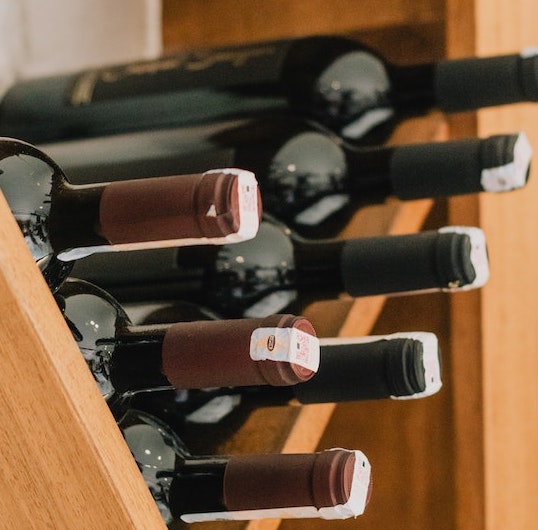When dining out, many wine enthusiasts have faced the perplexing question: How do restaurants price corkage fees? These fees, charged by establishments when patrons bring their own wine, can vary significantly between restaurants and even within the same city.
In this article, we will unravel the mystery behind corkage fees, exploring their origins, the factors that influence their pricing, and how restaurants determine these charges.

Table of Contents
Understanding Corkage Fees
Definition
First things first, what is a corkage fee? A corkage fee is a charge that some restaurants impose on customers who bring their own bottle of wine to consume at the establishment. This fee typically covers the cost of opening, decanting, and serving the wine, as well as any lost revenue from not selling a bottle from the restaurant’s own selection.
Origins
The concept of corkage fees dates back centuries and was initially practiced in Europe. The idea was to allow patrons to enjoy their own wine without infringing on the profits of the establishment. Nowadays, corkage fees are a common practice in restaurants across the globe.
Factors Influencing Corkage Fees
Restaurant Type
Corkage fees can vary significantly depending on the type of restaurant. High-end, fine-dining establishments often charge higher corkage fees, as they usually have extensive wine lists and may feel that allowing outside bottles detracts from their carefully curated selections. Conversely, more casual eateries might charge lower fees or not have any corkage fees at all.
Location
Geographical location also plays a role in determining corkage fees. Restaurants in urban areas with high competition and steep overhead costs might charge higher fees to maintain their profit margins, while those in less densely populated areas might be more lenient.
Bottle Service
Some restaurants offer a tiered corkage fee structure based on the level of service required for the bottle. A simple bottle opening might be less expensive than a more involved decanting and presentation process.
Legal Considerations
Corkage fees can also be influenced by local laws and regulations. In some jurisdictions, restaurants may be legally required to charge a corkage fee or face penalties. It’s essential to be aware of the local regulations in your area.
How Restaurants Determine Corkage Fees
Cost Analysis
To price corkage fees, restaurants first analyze the costs associated with allowing customers to bring their own wine. This may include the cost of glassware, labor for opening and serving the wine, and any additional services such as decanting.
Profit Margins
Restaurants also consider the potential lost revenue from not selling a bottle from their own wine list. They often calculate the average profit margin on their wine selection and factor that into the corkage fee to ensure they maintain profitability.
Competitor Analysis
Another factor in determining corkage fees is an analysis of the local competition. Restaurants will research the corkage fees charged by nearby establishments to ensure their fees are in line with the market and don’t drive away potential customers.
Benefits of Corkage Fees
Customers
For wine lovers who have a special bottle they’d like to enjoy with their meal, corkage fees allow them to do so. This can enhance the overall dining experience and create lasting memories. Additionally, customers who find a restaurant’s wine list unappealing or overpriced may appreciate the option to bring their own bottle.
Restaurants
Corkage fees help restaurants offset potential lost revenue from customers not purchasing wine from their list. Furthermore, allowing customers to bring their own wine can attract a wider clientele who may appreciate the flexibility and, in turn, increase overall business.
Tips for Paying Corkage Fees
- Research the restaurant’s corkage fee policy before visiting. Some establishments might not allow outside wine at all, while others may have specific rules and fees.
- Call ahead and inquire about the corkage fee if you can’t find the information online. This will help you avoid any surprises when you arrive at the restaurant.
- Be considerate and don’t bring a bottle that’s already on the restaurant’s wine list. It’s always a good idea to choose a wine that complements the menu and adds something unique to your dining experience.
- Offer the sommelier or server a taste of your wine as a gesture of appreciation for their service.
- Be prepared to tip your server based on the full value of the meal, including what you would have spent on wine from the restaurant’s list.
Examples of Corkage Fees
Example 1: Ruth’s Chris Steak House
Ruth’s Chris Steak House, a high-end steakhouse chain, is known for its exceptional steaks and wine list. The corkage fee varies depending on the location but typically ranges from $15 to $25 per bottle. Some locations may have restrictions on the number of bottles allowed, so it’s a good idea to call ahead and check their specific policy.
Example 2: Olive Garden
Olive Garden is a popular casual Italian-American chain and has a modest wine selection. While their corkage fee policy also varies by location, many Olive Garden restaurants charge around $10 per bottle. Be sure to inquire with the specific location you plan to visit to confirm their corkage fee.
Example 3: Farmhouse at Roger’s Gardens
Farmhouse at Roger’s Gardens, located in Corona del Mar, California, is a farm-to-table restaurant that focuses on locally-sourced, sustainable ingredients. Their corkage fee is $25 per bottle, but they offer a “BYO Mondays” promotion where the corkage fee is waived for up to two bottles per table.
Example 4: Denny’s
Denny’s, a well-known family diner chain, does not have a formal wine list, but some locations may allow customers to bring their own wine. Since Denny’s is a franchise, corkage policies can vary by location, and some may charge a small fee or not allow outside wine at all. It’s important to call the specific location you plan to visit to confirm their corkage policy.
Conclusion
Corkage fees are a complex and sometimes misunderstood aspect of the dining experience. Understanding their purpose and the factors that influence their pricing can help you make informed decisions when bringing your own wine to a restaurant. By considering the type of restaurant, location, and local laws, as well as the cost and profit analyses undertaken by the establishment, you can better appreciate the reasoning behind corkage fees. Remember to research the restaurant’s policy, be considerate with your wine selection, and enjoy your special bottle alongside a delicious meal.
Corkage Fees Frequently Asked Questions
Do all restaurants charge corkage fees?
No, not all restaurants charge corkage fees. It’s essential to research or inquire about a restaurant’s corkage fee policy before visiting.
Can I bring a bottle of wine that’s on the restaurant’s wine list?
While it’s not technically prohibited, it’s generally frowned upon to bring a wine that’s already on the restaurant’s list. Choose a unique bottle that enhances your dining experience.
How can I find out a restaurant’s corkage fee?
The best way to find out a restaurant’s corkage fee is to call ahead or check their website for information.
Should I tip my server for handling my wine, even though I brought it myself?
Yes, it’s a good practice to tip your server based on the full value of the meal, including what you would have spent on wine from the restaurant’s list

